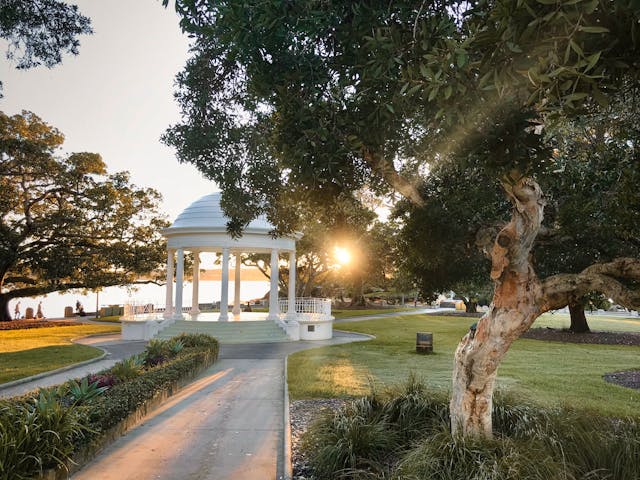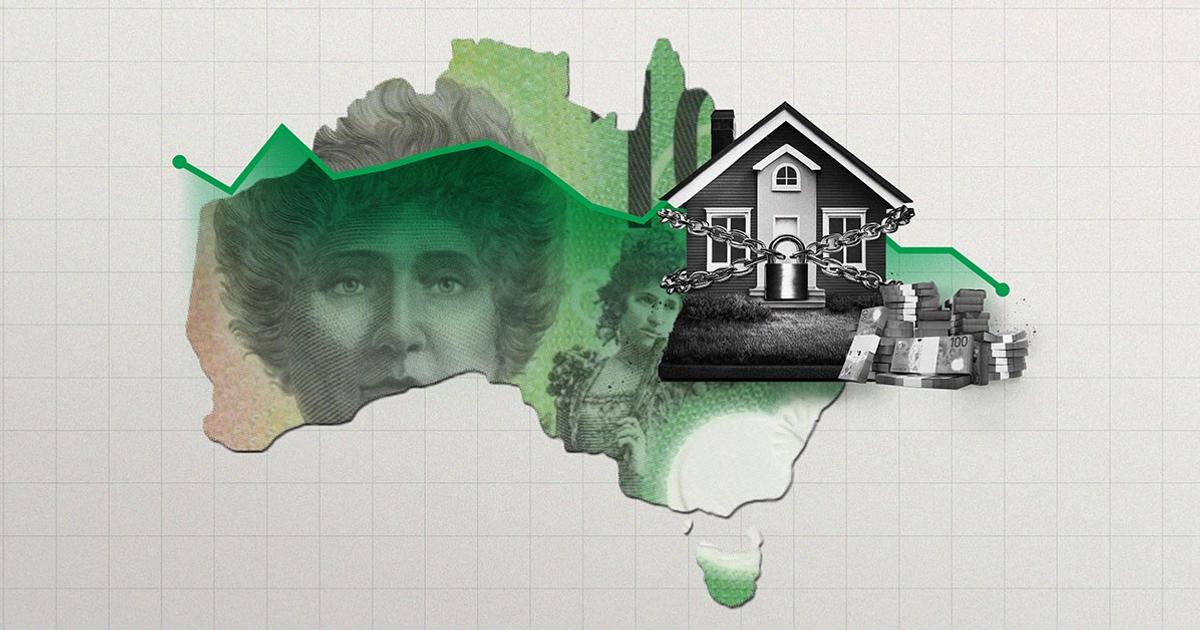
A retiree's frank assessment of developments in Sydney's most exclusive suburbs just sparked a heated debate about Australia's worsening housing emergency.
However, her blunt declaration also revealed a troubling disconnect at a time when the nation is failing to build enough homes annually.
The anonymous Mosman resident was filmed while expressing her concerns about proposed medium-density housing.
However, her thoughts represented a growing tension between established homeowners and a generation priced out of the market.
Her comments, shared by the local advocacy group Mosman Matters, encapsulate the Not In My Backyard (NIMBY) movement.
According to housing experts, the said movement is contributing to Australia's most severe housing crisis in decades.
The numbers don't lie
Australia built just 177,000 homes in 2024, falling a staggering 46,000 dwellings short of the 223,000 needed to meet basic demand.
The average Australian house now costs nearly nine times the average household income, a ratio that has almost doubled since 2002.
This ranks Australia among the world's least affordable housing markets, alongside cities such as Hong Kong and Vancouver.
Australia's housing crisis by the numbers
Only 177,000 new homes completed vs 223,000 needed
House prices up 4.9 per cent, rents up 4.8 per cent
Average house costs 9x household income, with 70 per cent of renters spend over 30 per cent of income on rent
Government target to fall short by 393,000 homes by 2029
About 22 per cent of Australians are satisfied with housing availability, while 76 per cent express dissatisfaction.
When retirement dreams meet rental reality
The Mosman woman's perspective, while criticised as privileged, reflected genuine concerns many established residents share about neighbourhood change.
However, the housing shortage has forced many households to start families as renters and enter retirement as renters too.
'Fear of density is the privilege of those already housed,' argues Melissa Neighbour, deputy chair of YIMBY Sydney.
'When you're insulated from rising rents and mortgage stress, every proposal looks like a menace.'
'Every generation before us built something new. Saying no to change now just means saying no to everyone who comes after.'
The resistance to medium-density housing in inner suburbs forces development to city fringes, creating what experts call a 'doughnut effect' - expensive inner areas surrounded by sprawling outer suburbs with limited transport and job opportunities.
Watch the interview here:
Source: Mosman Matters/Instagram
The real cost of saying 'No'
Research shows that decades of underbuilding have directly contributed to rising home prices, lower homeownership rates, and increasing household debt. When established suburbs resist change, the pressure shifts elsewhere.
Dr Max Holleran from the University of Melbourne notes that NIMBY opposition often stems from understandable concerns.
'We're not asking them to move, we're just asking to build something a little bit bigger next door so we can live in the same neighbourhoods that they've been enjoying for 30 years,' Dr Holleran shared.
Reserve Bank research shows that a one per cent increase in housing stock can reduce housing costs by approximately 2.5 per cent - meaning more housing genuinely helps everyone, including existing homeowners.
The luxury apartment loophole
The Mosman controversy highlighted another challenge: ensuring that new housing is genuinely affordable.
The rising incidence of renting has been partly driven by a growing shortage of affordable owner-occupier housing, forcing many households to become or remain renters.
In Mosman, where unit prices average $1.325 million and houses $5.725 million, even new 'affordable' housing may remain out of reach for many. This creates a cycle where high land values drive up the cost of any new construction.
Beyond the blame game
Only half of current renters expect to own a home in their lifetime, showing a profound shift in Australian expectations.
This isn't just about young people; it affects families, middle-aged professionals, and increasingly, people approaching retirement.
The woman in the video raised valid concerns about infrastructure and community character. However, housing advocates argue that proper planning can address these issues while still enabling necessary growth.
One neighbour pointed out that local apartments do not cause traffic congestion.
'It's caused by everyone having to drive from Penrith because they can't afford Mosman,' the neighbour shared.
Did you know?
Medium-density housing typically refers to buildings with three to six storeys located near transport hubs and key areas. Recent NSW planning reforms allow this type of development to create up to 112,000 new homes by 2030. Unlike high-rise towers, these developments aim to provide gentle density that can integrate with existing neighbourhoods while significantly increasing housing supply.
The path forward
The latest government report identifies complex planning systems as one of the key barriers to home building, alongside labour shortages and high costs. This suggests that streamlining approval processes could be beneficial, but only if communities are willing to accept that change is necessary.
Some councils are finding a middle ground, working with residents to design developments that respect the neighbourhood character while providing the needed housing.
The key is early consultation and transparent planning processes that address people's concerns.
For many seniors, the crisis hits close to home when adult children can't afford to live nearby, or when downsizing becomes financially unviable due to high apartment prices and stamp duty costs.
The anonymous resident's concerns about neighbourhood change are understandable, but her assumption that young people 'can't afford it anyway' has become a self-fulfilling prophecy.
When communities consistently oppose new housing, they ensure that only the very wealthy can afford to live there.
As cities evolve and populations grow, the choice isn't between change and no change.
The conversation needs to shift from whether neighbourhoods should change to how they can change in ways that benefit everyone.
What's your view on balancing neighbourhood character with housing needs? Have you seen examples of successful medium-density developments in your area, or do you share concerns about overdevelopment? Share your thoughts in the comments below.
Primary source
Retired Aussie caught in rant about changes to her affluent suburb: 'They can't afford it'
The woman's face had to be blurred and her voice distorted, in a sign of just how contentious the debate has become. au.finance.yahoo.com
au.finance.yahoo.com
Crisis: The state of Australia’s housing system in 2025
Cited text: 'Only 177,000 homes were built in 2024, far below the 223,000 the National Housing Supply and Affordability Council says was needed to meet demand.'
Excerpt: 'Australia built just 177,000 homes in 2024, falling a staggering 46,000 dwellings short of the 223,000 needed to meet basic demand.'

Crisis: The state of Australia’s housing system in 2025
Australia's housing crisis worsens with low home building, rising prices, and rents outpacing incomes. Discover key solutions to tackle this issue. australianpropertyupdate.com.au
australianpropertyupdate.com.au
Australians' Housing Crisis: Dreams Turn Into Nightmares
Cited text: 'Between 2002 and 2024, the house price-to-income ratio almost doubled, with the average house in Australia now costing nearly nine times the average...'
Excerpt: 'The average Australian house now costs nearly nine times the average household income, a ratio that has almost doubled since 2002.'

Australians' Housing Crisis: Dreams Turn Into Nightmares
New data highlight the housing crisis in Australia, where satisfaction with affordable housing has collapsed compared with other wealthy nations. news.gallup.com
news.gallup.com
State of the Housing System 2025
Cited text: 'The rising incidence of renting has been partly driven by a growing shortage of · affordable owner-occupier housing, which has forced many households ...'
Excerpt: 'However, the housing shortage has forced many households to start families as renters and enter retirement as renters too.'
Australia faces 400,000-home shortfall by 2029 | Mortgage Professional Australia
Cited text: 'Dutton emphasised that underbuilding over the past two decades has contributed to rising home prices, lower homeownership rates, and increasing household...'
Excerpt: 'Research shows that decades of underbuilding have directly contributed to rising home prices, lower homeownership rates, and increasing household debt.'
Australian working class faces rental affordability crisis—World Socialist Web Site
Cited text: 'A 2024 survey found that up to 70 percent of renting households fit this category, spending more than 30 percent of net income on rent.'
Excerpt: 'Average house costs 9x household income, with 70 per cent of renters spend over 30 per cent of income on rent'
Australian working class faces rental affordability crisis
A recent report comparing rental prices over the past ten years shows that housing costs are not only outpacing wages, but increasing at a ever faster rate.www.wsws.org







